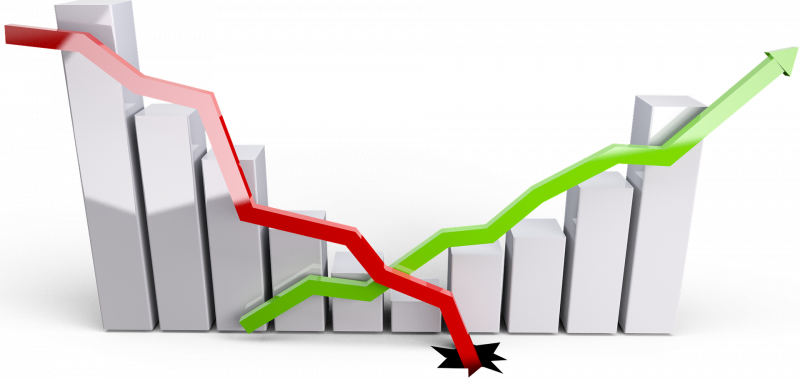
The upcoming MPC resolution of April 08, 2022 assumes critical importance on many counts. This will be the first meeting of the current fiscal after the release of the Union Budget 2023. It comes amid new fears of potential pressure on the Indian economy due to exogenous factors such as a sharp rise in crude oil prices which will impact the trade deficit and inflation, geo-political tensions on account of the Russia–Ukraine war, a slowdown in two major economies viz; USA and China, the re-emergence of Covid in Europe and China, inflation threat in the advanced economies, particularly, USA and Euro area, and the hike in the Fed Fund rate by the Federal Reserve, leading to the possibility of net outflows of foreign portfolio investment. The developments will force the MPC to revisit its growth and inflation outlook. The MPC will in the new fiscal also need to make a statement on the monetary policy stance as a forward guidance. The MPC will also have to address questions being asked on the need and the viability of the asymmetry in the LAF corridor with regard to policy repo rate (currently 4 per cent) and reverse repo rate (currently 3.35 per cent).
The Monetary Policy Committee must give priority to reviving growth. Inflation threat can be addressed through non-monetary measures
Against the above backdrop, let us now turn to the outlook on growth and inflation. In the February 10, 2022 resolution, the MPC resolved that the real GDP growth for 2022-23 is projected at 7.8 per cent with Q1:2022-23 at 17.2 per cent; Q2 at 7.0 per cent; Q3 at 4.3 per cent; and Q4:2022-23 at 4.5 per cent. There are positive developments in terms of revival of the economy with the Purchasing Managers’ Index (PMI) both for manufacturing (54.9) and services (51.8) above the threshold level of 50. Another positive development is that capacity utilisation has also increased. In addition to this, some of the lead indicators like e–bill payments, railway and port traffic, GST collections have shown signs of improvement.
However, private investment has remained sluggish and weak. Credit offtake has not been very encouraging. The Y-o-Y growth of credit to industries was only 6.4 per cent as on January 28, 2022. The sector-wise disaggregate picture reveals that credit offtake has declined for many industry segments such as fertiliser (-33.3 per cent), railways (-11.4 per cent), ports (-11.5 per cent) and air ports (-9.8 per cent), cement and cement products (-21.7 percent) and basic metal and metal products (-13.0 per cent). Thus, sluggish growth in private investment coupled with contraction in credit offtake might act as obstacles to the growth trajectory.
In addition to the domestic developments mentioned above, external factors in terms of contraction in growth in the USA and China and Russian–Ukraine War could have a negative effect on global growth and also the growth trajectory of the Indian Economy.
Fuel inflation may have a cascading effect on food inflation as transport costs will increase, Core inflation (headline inflation minus food and fuel) has already been higher – on an average of 6 per cent for some months. Therefore, one view could be that the MPC may consider increasing the policy repo rate, following the way of the advanced economies like USA that have already increased the rate.
On the inflation front, for two consecutive months, the inflation rate measured in terms of Consumer Price Index-Combined (CPI-C) has remained higher than the mandated average level of 4 per cent and the upper band of 6 per cent. The sharp rise in the price of crude oil will put an adverse impact on the inflation rate. According to the MPC resolution of February 10, 2022, the inflation projection for 2021-22 was estimated at 5.3 per cent, with Q4 at 5.7 per cent. Furthermore, on the assumption of a normal monsoon in 2022, CPI inflation for 2022-23 is projected at 4.5 per cent with Q1:2022-23 at 4.9 per cent; Q2 at 5.0 per cent; Q3 at 4.0 per cent; and Q4:2022-23 at 4.2 per cent, with risks broadly balanced. However, the sharp rise in crude oil prices will change the inflation estimates to higher levels.
In the context of growth and inflation outlook, it is worthwhile to take note of the estimates of the RBI monetary policy report of October 2021 (the latest report will be released on April 08, 2022). The MPR October 2021 mentioned that assuming crude oil prices to be 10 per cent above the baseline, domestic inflation could be higher by 30 bps and growth weaker by around 20 bps over the baseline. The baseline scenario assumed US$ 75 per barrel. The price of crude oil has gone up and is expected to remain on an average of US$ 100 per barrel - recording an increase of nearly 30 per cent. Thus, on a rough estimate, growth could contract by 60 bps and inflation could go up by 90 bps.
The threat of Inflation looms large and may be addressed jointly by the RBI and government through non-monetary measures like oil companies absorbing the burden, and a temporary reduction of excise duties.
The above estimate is indicative. However, the fact remains that growth and inflation will be adversely affected. Hence the emerging questions in the context of the MPC resolution are: (a) Should the policy repo rate be increased? (b) Should the accommodative stance be changed to neutral or tightening? (c) Should the LAF corridor be changed from the current asymmetrical (+25bps from policy repo rate under MSF and - 65bps for reverse repo rate) to symmetrical approach (+25 bps from policy repo rate for MSF and –25 bps for reverse repo)?
The monetary policy has a dual mandate of maintaining price stability and driving growth. There will be pressures on both growth and inflation. It may be mentioned that fuel inflation may have a cascading effect on food inflation as transport costs will increase, Core inflation (headline inflation minus food and fuel) has already been higher – on an average of 6 per cent for some months. Therefore, one view could be that the MPC may consider increasing the policy repo rate, following the way of the advanced economies like USA that have already increased the rate.
Some of the lead indicators like e–bill payments, railway and port traffic, GST collections have shown signs of improvement
Another view is any increase in the policy rate will transmit into the long-term rate. Already, the government bond rates are at a higher level; for example, the 10-year bond rate as on March 25, 2022 was 6.83 per cent as compared to 6.76 per cent a month ago and 6.32 per cent a year back. The rate hike to manage inflation may adversely impact growth as already weak private investment demand will further be contracted.
From the foregoing, the MPC at its April 10 resolution may well choose to keep the policy repo rate unchanged with an accommodating stance and also continue the asymmetrical treatment in the LAF corridor between the policy repo rate and reverse repo rate. The threat of Inflation looms large and may be addressed jointly by the RBI and government through non-monetary measures like oil companies absorbing the burden, and a temporary reduction of excise duties. The MPC resolution should give priority to reviving growth on a durable and sustainable basis.
(The writer is a former central banker and a faculty member at SPJIMR. Views are personal)







